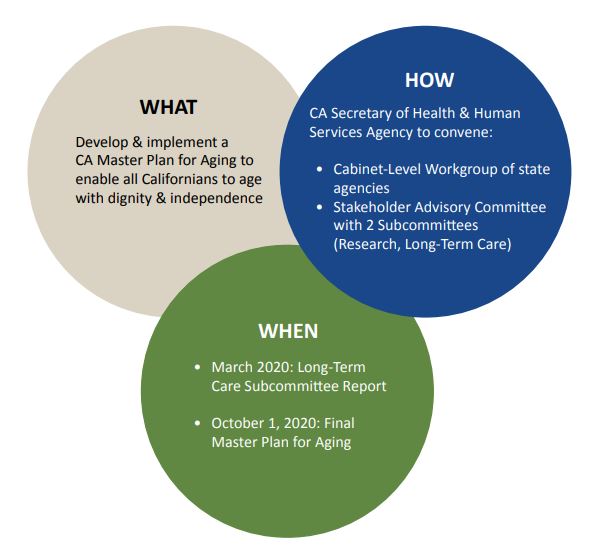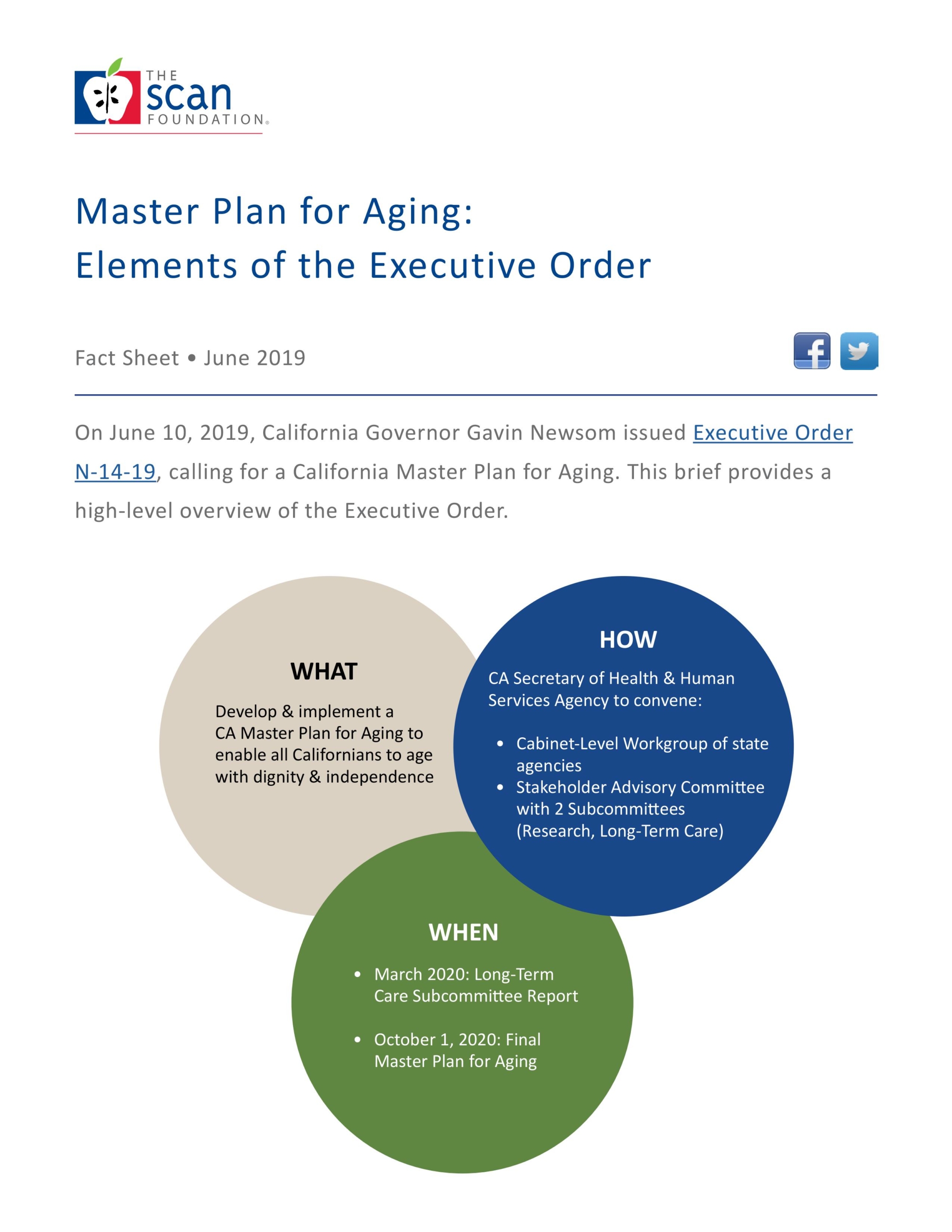Master Plan for Aging: Elements of the Executive Order
summary
On June 10, 2019, California Governor Gavin Newsom issued Executive Order N-14-19, calling for a California Master Plan for Aging. This brief provides a high-level overview of the Executive Order.
Date Updated: 06/13/2019On June 10, 2019, California Governor Newsom issued Executive Order N-14-19, calling for a Master Plan for Aging (Master Plan).1 This brief provides a high-level overview of the Executive Order.
What: Key Issues and Priorities
The Executive Order requires this Master Plan to serve as a blueprint for state and local government, the private sector, and philanthropy to implement strategies and partnerships that promote healthy aging for all Californians and prepare the state for the coming demographic changes. It recognizes the growth, diversity, and value of California’s older population, and the critical role of caregivers, paid and unpaid. Additionally, the Executive Order identifies the need for an “age-friendly” state that supports independence and choice, highlighting California’s leadership on supporting a wide range of home- and community-based services. The Master Plan is required to include recommendations to better coordinate federal, state, and local government programs and services. It must also include key data indicators with 10-year targets to support implementation.

How: State Agency and Stakeholder Engagement
The Executive Order directs the Health and Human Services Agency Secretary to convene the following committees to advise on the development and implementation of a Master Plan:
- Cabinet-level Workgroup for Aging with representation across state agencies
- Stakeholder Advisory Committee representing a broad array of stakeholders that includes two subcommittees (Research and Long-Term Care Subcommittees)
When: Key Deliverables and Deadlines
The Executive Order directs the secretary and these committees to deliver the following items:
- March 2020: Report from the Long-Term Care Subcommittee, focusing on the growth, stability, and sustainability of the long-term care infrastructure; access to and quality of long-term care programs; system financing; and workforce capacity
- October 1, 2020: Final Master Plan submitted to the governor
Next Steps
In the coming weeks, the Newsom Administration will identify members of the various committees and will create a work plan to guide these Master Plan efforts.
Download the publication for all visuals and complete references.
Continue Reading
The SCAN Foundation aims to identify models of care that bridge medical care and supportive service systems in an effort to meet people’s needs, values, and preferences. Care coordination is a central component of this vision, which ultimately leads to more person-centered care. This brief outlines The SCAN Foundation’s vision for care coordination in a person-centered, organized system.
This policy brief describes California’s results in the 2014 Long-Term Services and Supports State Scorecard, identifying areas for improvement as well as policy opportunities to transform and improve the state’s system of care.
To succeed in this era of health system transformation, plans and providers bearing risk – in an accountable care organization (ACO) for example – will need strategies for managing a broad array of care needs for high-risk beneficiaries across multiple settings of care. Download this fact sheet to learn more.


